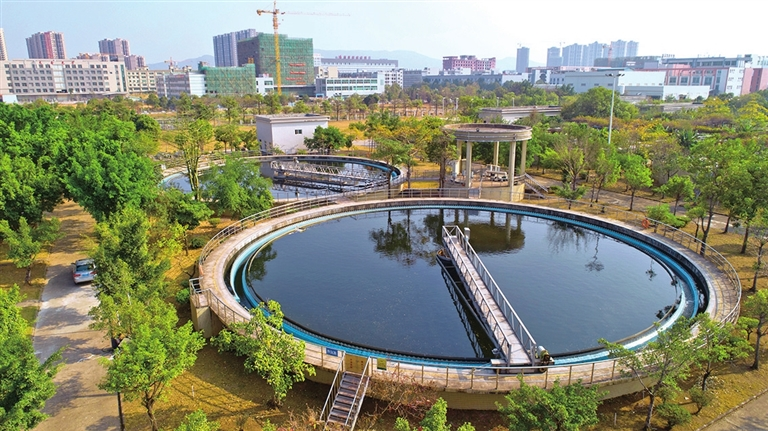 Drying Technology
Drying Technology
Keywords: Sewagetreatment plant、Sludgedryingtreatment
With the rapid development of the city, the number of sewage treatment plants and sewage treatment capacity increase simultaneously, leading to a rapid increase in the amount of sludge. In the past, concentrated sludge was only treated to 80% water content by mechanical dehydration before relevant disposal.

There are secondary pollution and other problems that seriously affect the sustainable development of the city. Taking Guangzhou as an example, the characteristics of municipal sludge quality in the central urban area are: high water content, small organic content, and seasonal changes; Pathogenic substances such as parasite eggs and pathogenic microorganisms generally exceeded the standard; Copper Zinc, chromium and other heavy metals exceed the standard; It contains polychlorinated biphenyls and other refractory organics.
Therefore, it is necessary to properly treat and dispose the sludge to avoid secondary pollution and meet the requirements for reduction, stabilization and harmlessness of sludge treatment and disposal. As early as the "13th Five Year Plan" period, the state put forward the assessment target of "by the end of 2015, the harmless treatment and disposal rate of sludge in the city will reach 100%" for relevant key cities. Therefore, each key city has carried out a special study on the follow-up disposal of municipal sludge, pointing out that sludge with a moisture content of 30%~40% can be used as cement production, backfill, unburned bricks and other materials; Sludge containing certain organic matter can be used for incineration and other heat treatment to generate heat energy; The sludge meeting the standard of heavy metals can also be used as the substrate soil for planting plants in garden forestry. Considering the characteristics of sludge with different moisture content and the requirements for the quality of sludge from the sewage treatment plants, it is appropriate to treat the sludge in the plant to a moisture content of 30%~40%, which is the goal of technical upgrading and reconstruction of new and expanded sludge treatment facilities in the sewage treatment plant. In 2010, Guangzhou built and put into operation the first all underground membrane bioreactor sewage treatment plant in China, creating a precedent for underground sewage treatment plants, and has been leading the country in this field. More and more underground sewage treatment plants have been built, but few sludge drying facilities are set underground. After investigation, except Guangzhou, there is only Shanghai Taihe Sewage Treatment Plant.
Dust is easily generated during sludge drying and transportation, especially when loading, the dust particles are small and the concentration is high. If the design is not well considered or the operation management is not standardized, the dust escapes into the air and is deposited on the ground and equipment surface under the action of gravity. Over time, the deposited dust becomes a source of odor pollution and continuously emits odor.
Sludge drying basically adopts high temperature (higher than 150 ℃) heating or low temperature vacuum drying. No matter what drying process is adopted
The temperature of the external surface of the equipment is much higher than the indoor air temperature. Although the sludge drying equipment is usually equipped with thermal insulation materials, the thickness of thermal insulation materials still exists
Insufficient temperature, incomplete insulation and other defects lead to continuous heat transfer of drying equipment to the operation workshop. Especially high temperature dry chemical
The measured indoor air temperature in the sludge drying workshop of Yiyi is generally more than 34 ℃, and the indoor air temperature in some sludge drying workshops even reaches
To 39 ℃. The higher indoor temperature intensifies the emission of odor pollutants, leading to the increase of odor concentration.
The content of organic matter in the sludge is high. Anaerobic fermentation reaction is easy to occur during storage and transportation, which generates high concentration odor such as ammonia and hydrogen sulfide. Moreover, heating the sludge will produce more organic odor substances. In the process of maintenance, material collection and transportation, malodorous substances escape to the operation workshop, affecting the indoor air quality. At the same time, the odor concentration in the tail gas after sludge drying is high, up to 5000~100000, and odor concentration fluctuates widely and is difficult to be treated to meet the discharge standard.